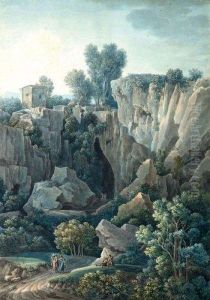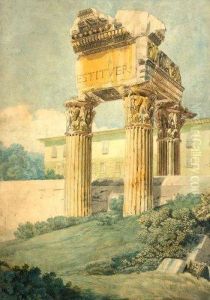Rodolphe Ducros Paintings
Rodolphe Ducros was a Swiss painter and engraver, born on July 19, 1746, in Lausanne, Switzerland. He is known for his landscape paintings and engravings that depict classical and historical scenes, as well as his work that reflects the influence of the Grand Tour, a popular journey across Europe undertaken by affluent young men of the time to complete their education.
Ducros initially trained under his father, who was a painter and gilder. He went on to study in Paris, where he was influenced by the French neoclassical movement and artists such as Joseph Vernet. Ducros' work was characterized by its meticulous attention to detail and its use of light and shadow, which contributed to the dramatic effect of his landscapes and historical scenes.
In the 1770s, Ducros moved to Rome, which was a hub for artists during this period. Here, he became associated with the circle of Jacob Philipp Hackert, a German landscape painter who also had a significant impact on Ducros' style and subject matter. During his time in Italy, Ducros produced a number of views of Rome and its surroundings, which became popular with Grand Tour travelers as souvenirs of their travels. These works were not only paintings but also a series of engravings that helped spread his reputation across Europe.
Ducros was also known for his collaboration with the British painter John Robert Cozens, with whom he worked on a series of views of Italy. Ducros' role was to add figures to Cozens' landscapes, a common practice at the time to enliven landscape works.
Despite his success, Ducros faced financial difficulties later in life, particularly after the French invasion of Italy at the end of the 18th century, which disrupted the Grand Tour and, consequently, his main source of income. Ducros returned to Lausanne in 1807, where he continued to work until his death on October 19, 1819.
Throughout his career, Ducros' work was well-received, and he exhibited at various salons and academies. His legacy lies in his contribution to the neoclassical landscape genre and his ability to capture the essence of the European landscape, which was greatly admired by his contemporaries and influenced future generations of artists.

